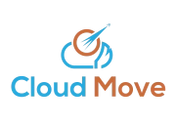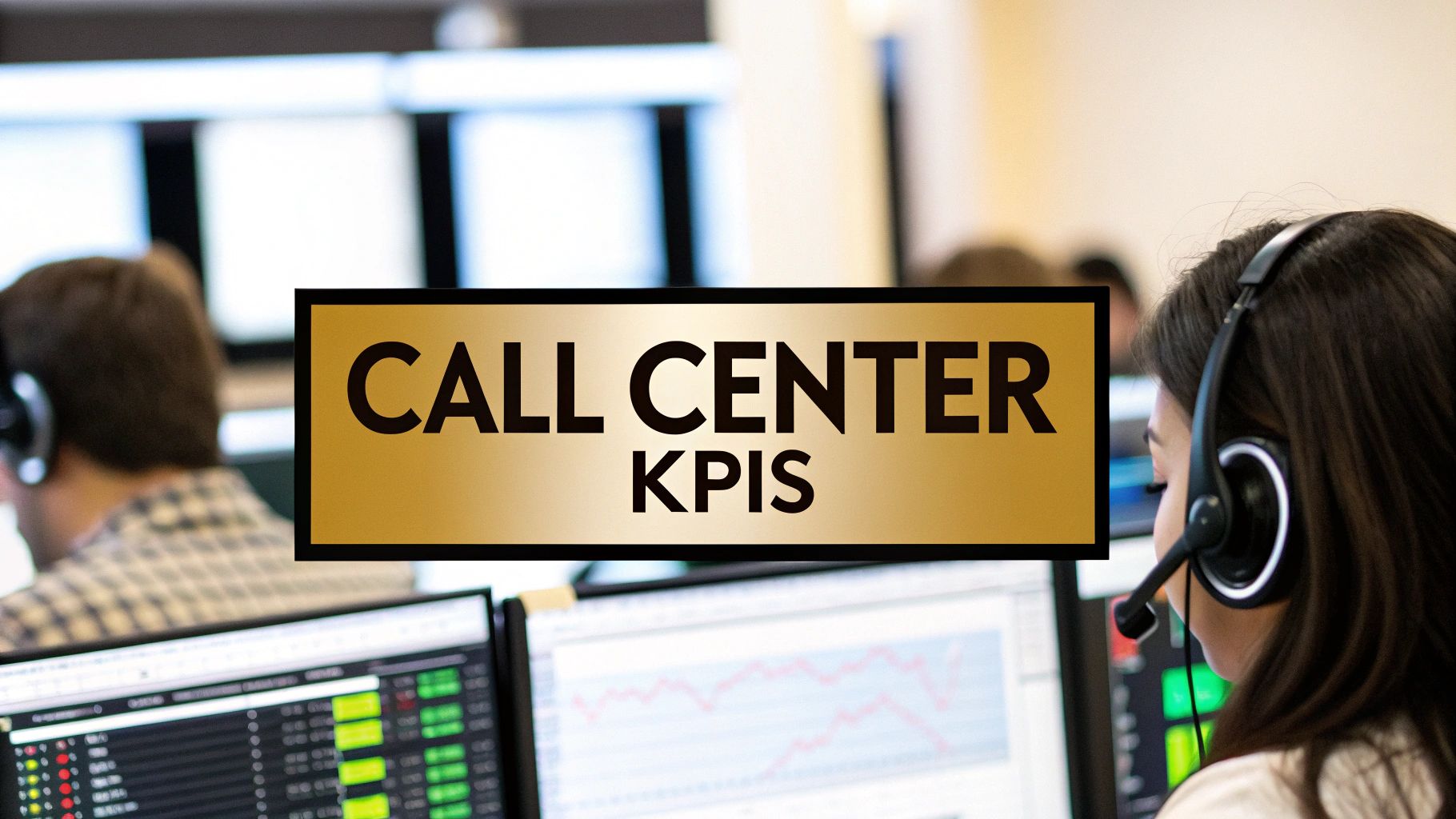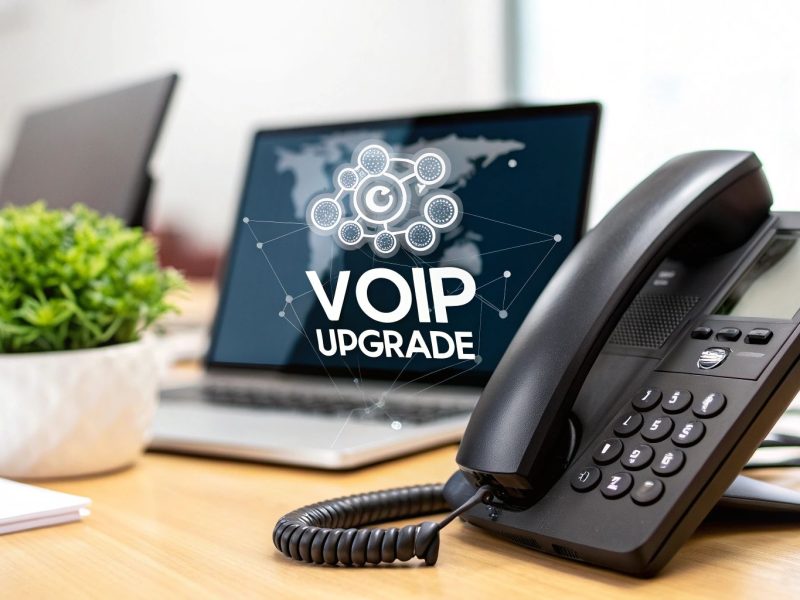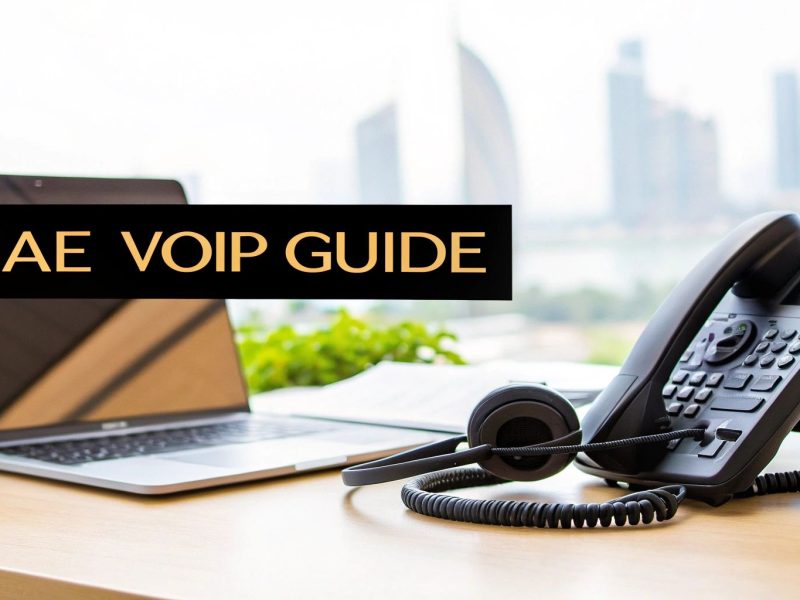Call center KPIs, or Key Performance Indicators, are the specific, measurable data points you rely on to gauge how your contact center is really doing. Think of them as vital signs for your operation. They track everything from how productive your agents are to how happy your customers are, giving you the hard data needed to make smart decisions and genuinely improve service quality.
Why Call Center KPIs Are Your Compass for Success

Trying to manage a call center without data is like flying a plane with no instruments—you’re moving, but you have no clue if you're heading in the right direction. KPIs are that essential toolkit, giving you the real-time feedback needed to navigate challenges and steer your team toward its goals.
These metrics turn vague ambitions into concrete targets. Instead of just aiming for "better service," you can now focus on improving specific call center KPIs, like boosting First Call Resolution (FCR) by 5% or trimming Average Handle Time (AHT) by 15 seconds. This shift from guesswork to a data-driven strategy is the foundation of any high-performing operation.
The Strategic Value of Tracking Performance
The pressure to run an efficient call center is immense, and the industry's global footprint reflects that. This is particularly true in the Asia-Pacific region, where the market is set to hit a staggering USD 72.56 billion in 2024—that's roughly 23% of the entire global call center revenue.
With a projected annual growth rate of 14.5% through 2031, the competition is only getting fiercer, making performance optimization—and the KPIs that guide it—more critical than ever. You can find more insights about the expanding Asia Pacific call centre market here.
When you start monitoring the right metrics, you unlock some powerful advantages:
- Happier, More Loyal Customers: KPIs like Net Promoter Score (NPS) and Customer Satisfaction (CSAT) directly measure how people feel after an interaction. Tracking these helps you pinpoint friction points and make changes that keep customers coming back.
- Smoother, More Efficient Operations: Metrics like Cost Per Contact and Agent Utilization are your best friends for spotting and fixing bottlenecks. They ensure you're getting the most out of your resources and keeping costs in check.
- Empowered and Engaged Agents: Performance indicators like Schedule Adherence and Quality Scores give agents clear goals to work toward. This data fuels targeted coaching and recognition, creating a culture where everyone is invested in getting better.
Think of KPIs as a language. They translate the chaos of daily operations into a clear story about your performance, showing you exactly where you're winning and where you need to focus your attention.
To get a handle on all the potential metrics out there, it helps to group them into a few key areas. In this guide, we'll break down call center KPIs into three critical categories: customer-focused metrics that measure loyalty, operational metrics that track efficiency, and agent-focused metrics that evaluate effectiveness. This structured approach will set the stage for a deeper dive into the specific indicators that will drive your business forward.
Customer-Focused KPIs That Build Lasting Loyalty
While operational efficiency keeps the lights on, the metrics that truly define your success are the ones that gauge customer happiness. These are your customer-focused call center KPIs. They aren't just abstract numbers; they're direct lines of feedback on your service quality and the strength of the relationships you're building.
Ultimately, these metrics tell you if you're just closing tickets or if you're actually creating fans of your brand.
Think of these KPIs as different ways of asking your customer, "So, how did we really do?" Each one gives you a unique snapshot of their experience, allowing you to stop guessing and start making decisions based on what your customers actually think and feel.
The image below shows how a major customer metric, the Customer Satisfaction Score, sits within the larger family of essential call center KPIs.

As you can see, metrics like Handle Time are crucial for efficiency, but they all serve the ultimate goal: earning high customer satisfaction. Let's break down the most important ones.
Measuring Immediate Happiness with CSAT
Customer Satisfaction (CSAT) is the instant gut-check on a recent interaction. It’s that immediate "thumbs up" or "thumbs down" a customer gives you right after a call or chat.
You measure it by asking a simple, direct question like, "How satisfied were you with your interaction today?" Customers usually respond on a 1-to-5 scale. A high CSAT score means your agents are hitting the mark and meeting needs in the moment, making it a powerful, short-term pulse check on service quality.
CSAT Calculation: (Number of Satisfied Customers [e.g., scores 4-5] / Total Number of Survey Responses) x 100
So, if you get 200 survey responses and 160 of them are a 4 or 5, your CSAT score is a solid 80%. This tells you that the vast majority of your recent interactions left customers feeling good. For a deeper dive, it's worth exploring broader customer experience optimization strategies.
Gauging Long-Term Loyalty with NPS
While CSAT looks at a single moment, Net Promoter Score (NPS) zooms out to measure a customer's overall loyalty to your brand. It gets right to the point by asking the ultimate question: "On a scale of 0-10, how likely are you to recommend our company to a friend or colleague?"
Based on their answer, customers fall into one of three camps:
- Promoters (Score 9-10): These are your brand champions. They’re the ones who will actively sing your praises.
- Passives (Score 7-8): They're satisfied for now, but not truly loyal. A competitor's better offer could easily sway them.
- Detractors (Score 0-6): These are unhappy customers who might actively share their bad experiences, potentially harming your brand.
The formula is simple: % Promoters – % Detractors. Any positive score is a good start, but a score above 50 is considered excellent. NPS gives you that crucial long-term view of your brand's health and its potential for word-of-mouth growth.
Understanding Customer Effort with CES
Here’s one of the most revealing customer-focused KPIs: the Customer Effort Score (CES). This metric asks a fundamentally different question: "How easy was it to get your issue resolved?"
Think about it. An agent could be incredibly friendly and even solve the problem, leading to a decent CSAT score. But if that customer had to call three times, repeat their story to four different agents, and spend an hour on the phone, they're not going to feel great about the experience.
That high-effort interaction completely erodes loyalty. A low CES score is a major red flag that your internal processes are creating friction and frustration for the very people you're trying to help. To see how CES fits with other key metrics, take a look at our complete guide on https://cloud-call-center.ae/2025/05/09/contact-center-kpis/.
To help you keep these vital metrics straight, here's a quick summary of the key customer-focused KPIs we've discussed.
Key Customer-Focused KPIs Explained
This table provides a snapshot of the most important customer-centric metrics, what they measure, and when they are most useful.
| KPI Name | What It Measures | Calculation Formula | Best Used For |
|---|---|---|---|
| Customer Satisfaction (CSAT) | Short-term happiness with a specific interaction | (% of Satisfied Responses / Total Responses) x 100 | Getting immediate feedback on agent performance and specific touchpoints. |
| Net Promoter Score (NPS) | Long-term customer loyalty and willingness to recommend | % Promoters – % Detractors | Measuring overall brand health and predicting future business growth. |
| Customer Effort Score (CES) | How easy it was for a customer to get their issue resolved | (Sum of all scores / Number of responses) | Identifying and fixing friction points in your customer service processes. |
Each of these KPIs offers a different lens through which to view your customer's experience. Using them together provides a much richer, more complete picture than relying on just one.
Operational KPIs for a More Efficient Call Center

While customer-facing metrics tell you how people feel about your service, operational call center KPIs turn the lens inward. Think of these as the diagnostic tools for the engine room of your organization. They help you get a clear, honest answer to crucial questions like, "Are we actually solving problems?" and "Are we burning through resources unnecessarily?"
Getting a handle on these KPIs is all about striking the right balance between speed and quality. The real goal is to build a workflow that’s not just fast, but smooth and cost-effective—one that ultimately supports an outstanding customer experience. When your internal operations are humming along, you’ll see the positive effects on your customers and your bottom line.
First Call Resolution: The Ultimate Efficiency Metric
If there's one operational KPI that stands above the rest, it’s First Call Resolution (FCR). I like to call it the "one-and-done" metric. It simply measures the percentage of customer issues you completely resolve in the very first interaction, with no need for a follow-up call, email, or chat.
A high FCR rate is a massive win for everyone. Customers are happy because their problems vanish quickly. Your call center runs better because you’re not clogging up the phone lines with repeat calls about the same old issues. It’s no surprise that a strong FCR is one of the most powerful drivers of customer satisfaction. To get this right, you also need the right tech foundation; evaluating the best VoIP solutions for small businesses can make a huge difference in call management and clarity.
This metric is especially critical in competitive markets. For example, a key performance indicator for call centers in the UAE is the FCR rate, and global benchmarks for the Asia-Pacific region typically sit between 70% and 75%. What’s really telling is that a staggering 60% of FCR failures happen simply because agents don't have the right information or tools at their fingertips. That’s a huge, solvable problem.
FCR Calculation: (Total Number of Issues Resolved on First Contact / Total Number of First Contacts) x 100
Let’s put that into practice. Say you fielded 500 initial calls about an issue and your team managed to fully resolve 375 of them without a single follow-up. That gives you a healthy FCR rate of 75%.
Decoding Average Handle Time
Another core operational KPI is Average Handle Time (AHT). This measures the average length of a customer interaction, from the moment it starts to the moment it’s fully wrapped up. A common trap is to think that a lower AHT is always better. While nobody wants to waste time, rushing a customer off the phone only to have them call back frustrated is far more damaging.
Picture an agent who proudly gets a customer off the phone in two minutes flat—a stellar AHT on paper. But what if the problem wasn't really solved? The customer is going to call back, even more annoyed than before. Now, that single issue has created two calls, doubling your cost and tanking customer satisfaction, all for the sake of a low AHT.
The real goal isn't just speed; it's to be efficient and effective. A slightly longer call that results in First Call Resolution is infinitely more valuable than a short one that solves nothing.
To truly understand and improve AHT, you have to break it down into its core parts:
- Total Talk Time: The time the agent actually spends speaking with the customer.
- Total Hold Time: Any time the customer is left waiting on hold.
- After-Call Work (Wrap-Up Time): The time an agent needs after the call to log notes, send follow-up emails, or update the CRM.
By looking at each piece of the puzzle, you can spot the real bottlenecks. Are hold times dragging on? Maybe agents need faster access to information. Is wrap-up taking forever? It might be time to streamline your processes or look into better CRM integration. This is how you fine-tune this essential call center KPI.
Agent Performance KPIs That Foster Growth
Your agents are the heart of your entire customer service operation. While customer happiness and operational efficiency are crucial, the call center KPIs that track agent performance are what really build the foundation for success. Think of these metrics less as tools for scrutiny and more as a roadmap for coaching, development, and creating a truly motivated team.
When agents can see and understand their own performance data, they transform from employees into partners in the center's success. This simple shift can change the entire work environment, moving it from one of top-down monitoring to one of collective growth where everyone is focused on the same goal: delivering incredible service.
Measuring Productivity with Occupancy Rate
Imagine a cashier at a busy grocery store. You want them to be actively helping customers most of the time, not just standing around waiting. Occupancy Rate is the call center version of that. It measures the percentage of time an agent is actively engaged in call-related work—whether that's talking, putting someone on hold, or completing after-call notes—compared to their total time logged in and available.
A healthy occupancy rate, usually sitting between 80-85%, is a great sign that your staffing levels are just right for your call volume. If it dips too low, you're likely overstaffed and paying for idle time. But if it consistently creeps above 90%, your agents are probably on a fast track to burnout, and the quality of their service will inevitably suffer.
Occupancy Rate is all about balance. It’s how you ensure you’re not wasting resources while also protecting your most valuable asset—your agents—from total exhaustion.
This KPI is your guide for making smart decisions about scheduling and workload distribution, keeping your team productive without pushing them over the edge. It's a fundamental indicator of how efficiently your workforce is managed.
Ensuring Reliability with Schedule Adherence
While Occupancy Rate tells you how busy agents are, Schedule Adherence tells you if they're where they're supposed to be, when they're supposed to be there. It tracks how well they stick to their assigned shifts—logging in on time, taking breaks as scheduled, and logging out when they should. This might sound like micromanagement, but its impact on the entire operation is huge.
High schedule adherence is the secret to accurate forecasting and stable service levels. When you can count on your agents to follow their schedules, you can reliably predict your capacity to handle incoming calls. This is what prevents those frustrating, unexpected spikes in customer wait times.
Here’s why it’s so critical:
- Predictable Service Levels: It ensures someone is always ready for the next call, helping you consistently hit your target for Average Speed of Answer.
- Fair Work Distribution: It stops a few hardworking agents from shouldering the burden while others are off-task or unavailable.
- Operational Stability: It makes your entire operation more predictable and manageable, which is especially important during those chaotic peak hours.
Blending Numbers with Quality Assurance
Productivity metrics like Occupancy and Adherence are essential, but they don't tell the whole story. An agent can have a perfect adherence score and a high occupancy rate but still be rushing through calls and leaving customers frustrated. This is exactly why Quality Assurance (QA) Scores are non-negotiable.
QA involves listening to call recordings and scoring interactions against a clear, predefined checklist. This scorecard typically answers questions like:
- Did the agent use a proper and friendly greeting?
- Was their tone empathetic and professional?
- Did they provide an accurate and complete solution to the customer's problem?
- Were all compliance and procedural steps followed correctly?
When you combine these qualitative scores with your quantitative data, you get a balanced and fair picture of an agent's performance. It allows you to have much more meaningful coaching conversations that focus not just on "how fast" or "how many," but on "how well." To get a better sense of how to build these out, you can find a comprehensive guide to call center kpi frameworks. This blended approach creates a culture where agents are rewarded for both their efficiency and the genuine quality of their interactions, which is the key to sustainable success.
Connecting KPIs to Business Goals and Outsourcing

Up to this point, we've broken down the vital signs of a call center—the core customer, operational, and agent metrics that track day-to-day performance. But these numbers are more than just entries on a dashboard. To see their real value, you have to connect them to the bigger picture: your company's strategic goals and its bottom line.
Think about a metric like Cost Per Contact. On the surface, it’s a simple efficiency stat. But to your CFO, it’s a direct line to managing operational spending and boosting profitability. Every time you successfully drive that number down, whether through smarter processes or new tech, you’re not just hitting a departmental target. You're directly contributing to the financial health of the business.
This is how you start thinking like the C-suite. Every single KPI tells a financial story. A high First Call Resolution (FCR) rate isn’t just good for customer sanity; it slashes the expense of handling repeat calls. A strong Net Promoter Score (NPS) isn't a vanity metric; it’s a reliable indicator of customer loyalty and future revenue. When you frame performance this way, your call center stops looking like a cost center and starts being recognized as a strategic engine for growth.
Strategic Outsourcing and Vendor Management
This business-centric view of call center KPIs becomes absolutely critical when you’re facing big decisions, like whether to outsource your customer service. For many companies, especially in a competitive market like the UAE, bringing in a specialized partner is a smart move. It can unlock expert skills, create operational flexibility, and bring costs under control.
But here’s the catch: outsourcing without a rock-solid KPI framework is a recipe for failure. The very same metrics you use to manage your internal team must become the bedrock of your contract with an external partner. They create a clear, objective language to define expectations and ensure the vendor delivers service that lives up to your brand’s promise.
When you outsource, you're placing your customer relationships in someone else's hands. Your KPIs are the mechanism that lets you maintain control and ensure your customers get the same great experience, no matter who is answering the phone.
A mature understanding of performance measurement is non-negotiable before you even consider outsourcing. The global market for these services is massive. The Asia Pacific contact center outsourcing market, which has strong ties to the UAE service sector, was valued at roughly USD 24.19 billion in 2024. With experts predicting annual growth of around 10% through 2033, the demand for high-quality inbound and outbound services is undeniable. You can dive deeper into the growth drivers in the contact centre outsourcing market to see the full picture.
Selecting the Right Outsourcing Partner
When you start vetting potential partners, your established KPI benchmarks are your ultimate scorecard. This is your chance to ask sharp, specific questions tied directly to the metrics that matter most.
- What are your standard service levels for Average Speed of Answer?
- Can you show us your historical First Call Resolution rates for clients in our industry?
- How, specifically, do you measure and report on Customer Satisfaction (CSAT)?
- What does your process for monitoring agent adherence and overall quality assurance look like?
A potential partner who can field these questions with hard data and transparent reporting is a partner who gets it. They understand accountability. Your call center KPIs empower you to cut through vague promises of "excellent service" and build a data-driven relationship founded on shared goals and measurable success. This is how you ensure your brand's reputation is protected and your business objectives are met, without fail.
Building a Balanced and Actionable KPI Strategy
It’s one thing to have a long list of call center KPIs. It's another thing entirely to turn that raw data into a real strategy that actually improves performance. Without a clear plan, it’s all too easy to get stuck in "analysis paralysis"—you're swimming in numbers but have no idea what they mean or what to do next.
The trick is to stop collecting metrics and start curating them. Instead of trying to track dozens of different things, zero in on a handful of KPIs that truly reflect your core business objectives. You have to ask yourself: what does success actually look like for us? Then, pick the metrics that tell that story.
Creating a Balanced Scorecard
One of the best ways to gain that focus is by creating a balanced scorecard. Think of it less like a simple list and more like a holistic dashboard. It gives you a complete picture of performance by blending different perspectives, which stops you from chasing one goal at the expense of another.
A solid scorecard usually mixes metrics from a few key areas:
- Customer Metrics: Things like Net Promoter Score (NPS) and Customer Satisfaction (CSAT). These keep the customer's voice front and center.
- Operational Metrics: This is where First Call Resolution (FCR) and Average Handle Time (AHT) come in, helping you keep an eye on efficiency.
- Agent Metrics: Metrics like Quality Assurance (QA) Scores and Schedule Adherence are crucial for developing your team and ensuring accountability.
This balanced approach prevents a push for speed from accidentally tanking your customer experience. A smart KPI strategy hinges on tracking meaningful KPIs through analytics and reporting, no matter what part of the business you're looking at.
Your KPI strategy isn't just about measuring what happened. It’s about inspiring your team to take action. Every single metric on your dashboard should have a clear purpose, telling you exactly where you stand and what your next move should be.
By putting a framework like this in place, your data transforms from overwhelming noise into a clear signal. For more help on choosing the right metrics, our guide on essential KPIs for call centers offers some great insights. Ultimately, this kind of strategic focus is what separates the top-tier call centers from everyone else.
Frequently Asked Questions About Call Center KPIs
Diving into call center KPIs often brings up some very practical questions. How many should you actually track without getting lost in the data? And what really separates a simple metric from a true key performance indicator? Let's tackle some of the most common questions managers have.
How Many KPIs Should I Track?
It’s easy to fall into the trap of tracking everything you possibly can. But this usually leads to "analysis paralysis," where you’re drowning in data but starved for actual insight. While there's no single magic number, less is almost always more.
Most successful call center managers I know focus on 5 to 7 core KPIs that tie directly back to their main business goals. This tight, focused list ensures your team can concentrate on improving what genuinely matters, without being distracted by metrics that don't move the needle.
What’s the Difference Between a Metric and a KPI?
This is a great question, and the distinction is critical. The simplest way to think about it is that a metric measures an activity, while a KPI measures that activity against a strategic goal.
A metric tells you what happened. A KPI tells you if what happened was good or bad for the business. Every KPI is a metric, but not every metric is important enough to be a KPI.
For instance, "total calls handled" is a metric. It's a piece of data, but on its own, it doesn’t tell you anything about performance. On the other hand, First Call Resolution (FCR) is a true KPI because it directly measures how effectively you're solving customer issues, which is tied to core business goals like customer satisfaction and operational efficiency.
How Can I Get Agents to Care About KPIs?
For call center KPIs to mean anything, your agents have to be on board. If they just see them as another way for management to look over their shoulder, you'll get resistance, not results. The trick is to position KPIs as tools for their own success and professional growth.
- Make it Visual: Put real-time dashboards up on screens. When the whole team can see their collective performance, it builds a sense of shared purpose and even a little friendly competition.
- Connect KPIs to Impact: Don't just show them the numbers; show them the story behind the numbers. Regularly explain how hitting a CSAT goal directly leads to happier, more loyal customers and a stronger company.
- Use Data for Coaching, Not Punishment: One-on-one meetings should be about development. Use KPI data to pinpoint specific areas for coaching and, just as importantly, to celebrate wins and improvements.
- Incentivize What Matters: Tie recognition, bonuses, or other perks to the KPIs you want to improve. When agents have a real stake in the outcome, their engagement follows naturally.
When you make KPIs transparent, relevant, and constructive, they stop being a source of pressure and become a powerful source of motivation for your entire team.
Ready to turn insights into action? Cloud Move provides advanced contact center solutions with integrated analytics and reporting, helping you track the right KPIs and empower your team. Discover how our tools can improve your performance by scheduling a free demo today at cloud-call-center.ae.




